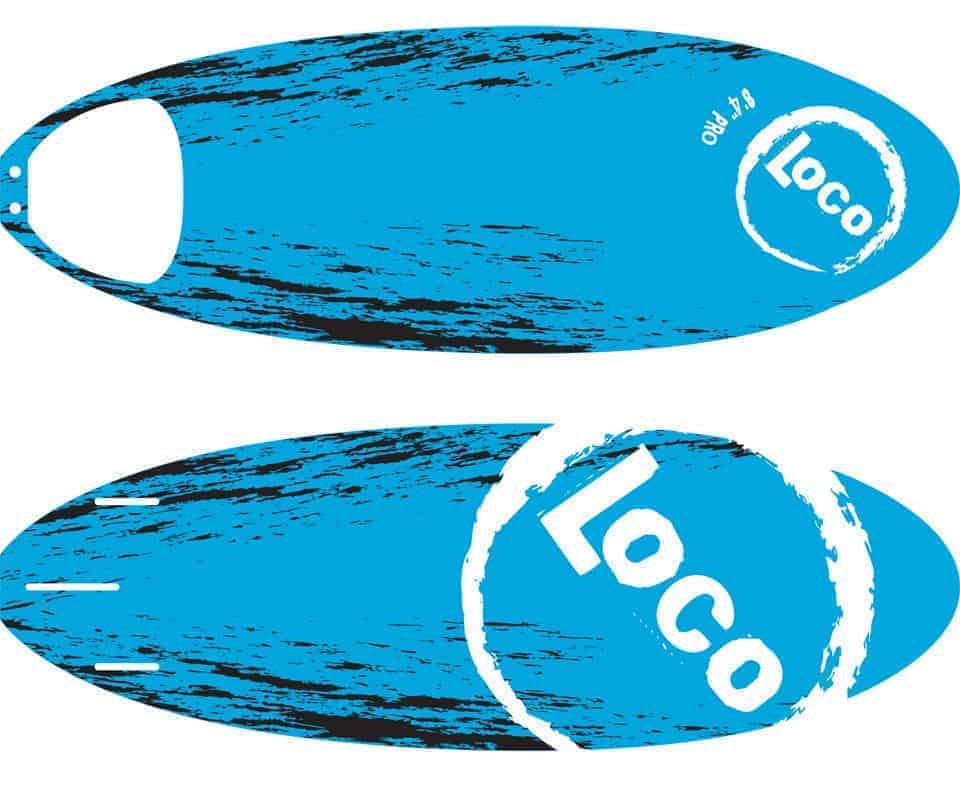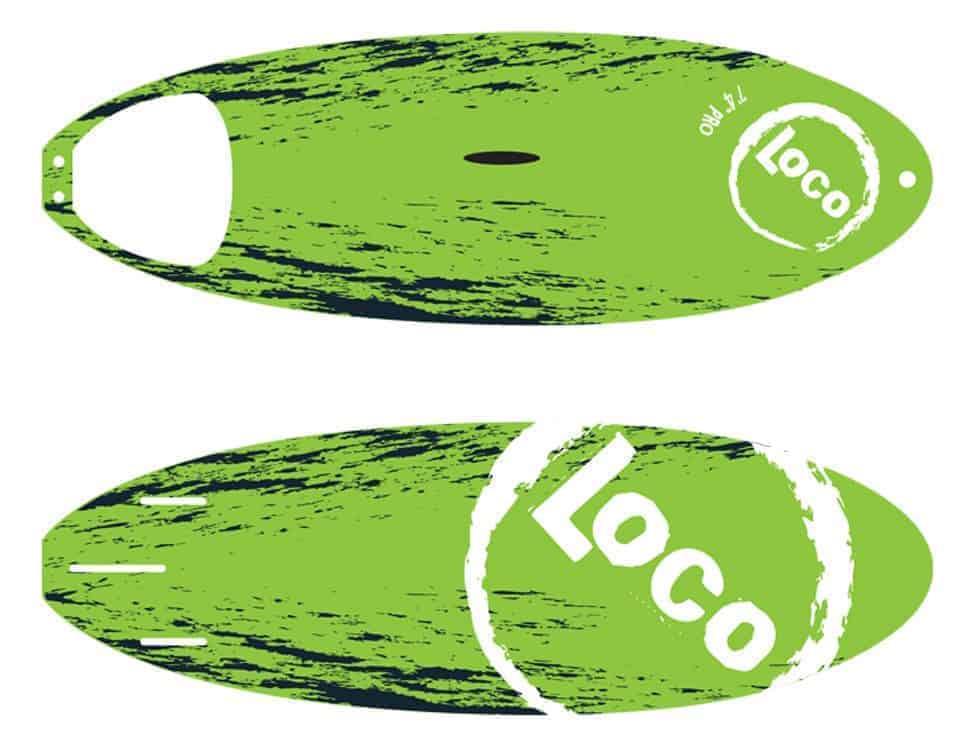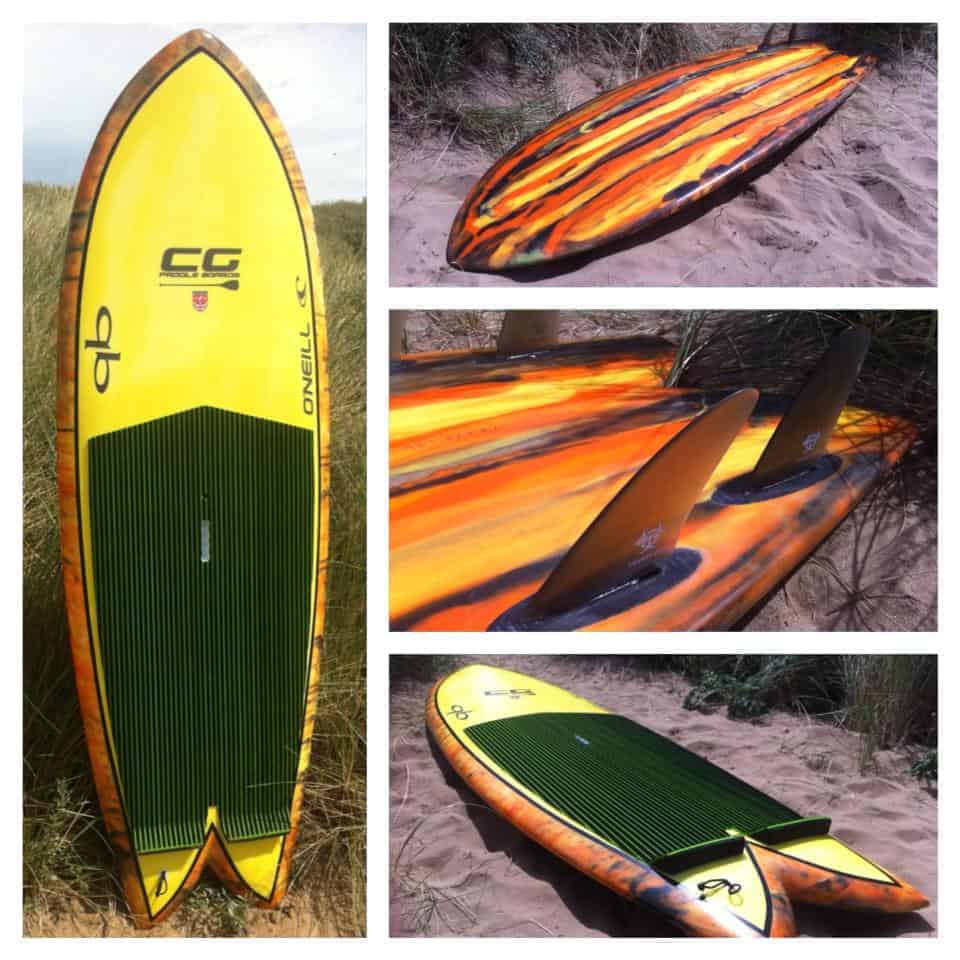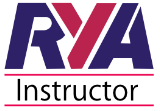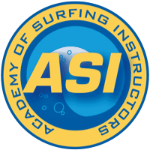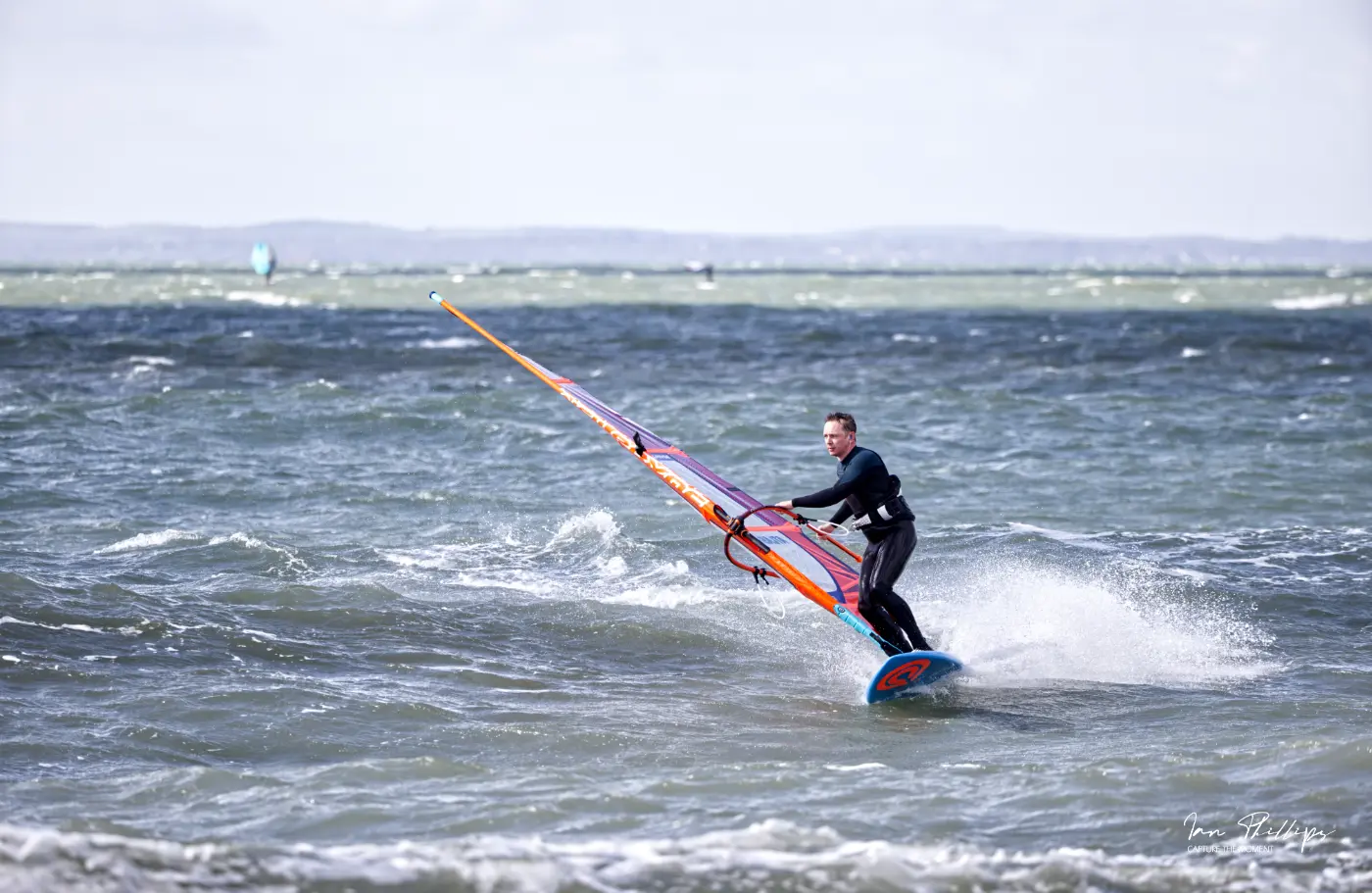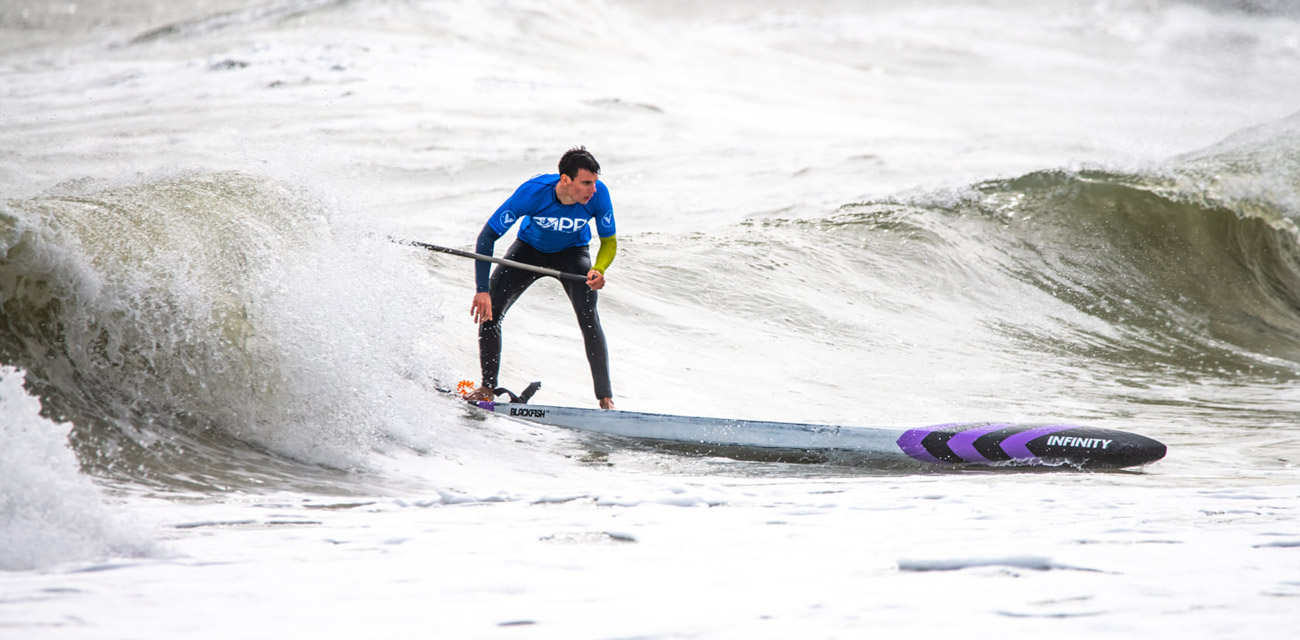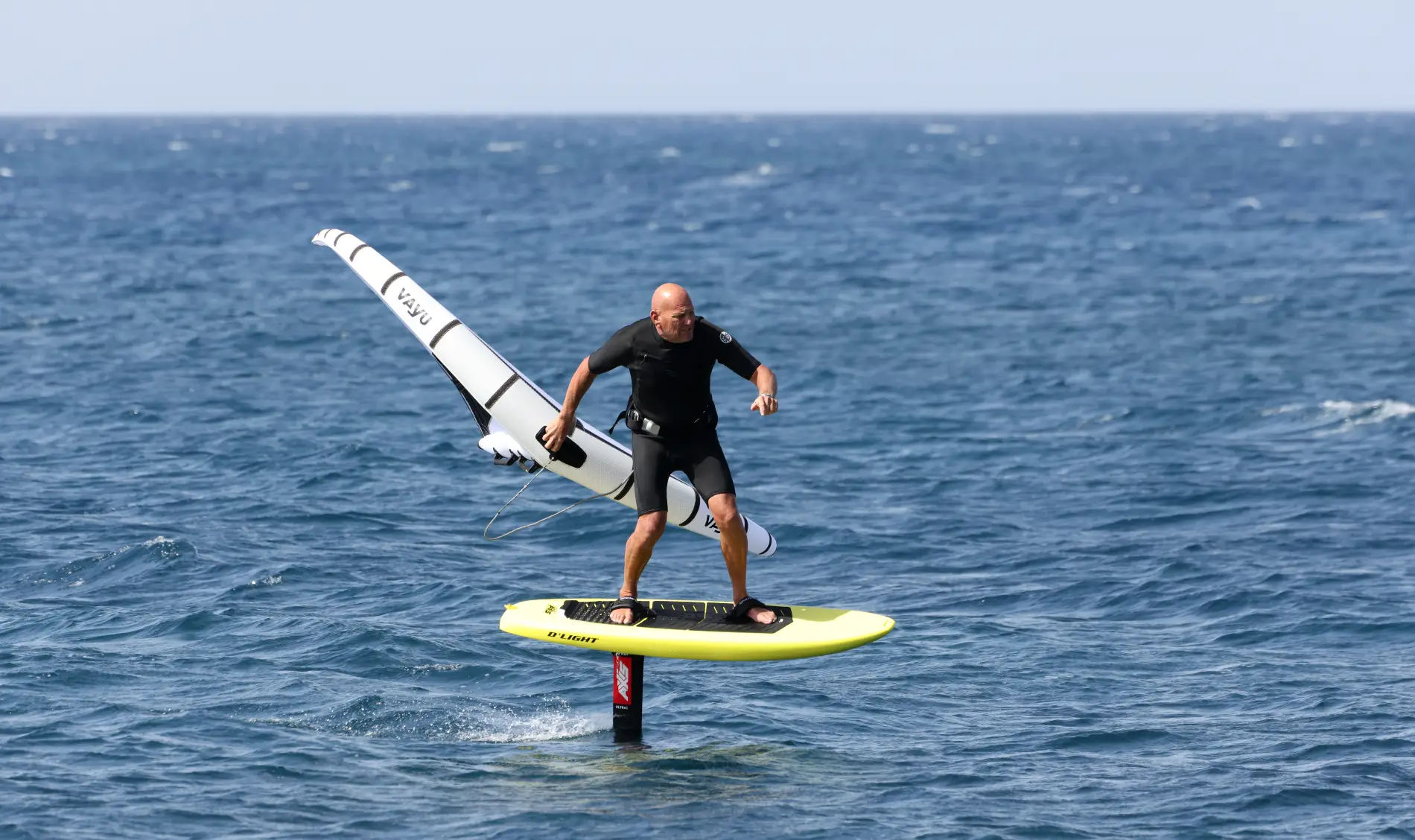I have given this articles lots of thought and pulled together my own experiences to help others.
I have enjoyed watersports since I was small and came across SUP 3 years ago. At the time I would never really see others out there and anyone I did come across was on a beaten up plank of a board and just paddling along.
Some months after stepping on a board for the first time I bought a Starboard Hero without really knowing what I was buying into. It was 9ft long with lots of volume so very easy to get up on and go.
For about 6 months I would paddling for miles on this board but never really attempted to surf it until my birthday, Feb 8th.
It was snowing on the beach at West Wittering and a light northerly wind offshore set up perfect glassy waves of about 2ft, but freezing.
I paddled out kitted out in gloves, hood and boots but not even that was going to keep me warm.
I spent about an hour paddling around just to keep warm before catching my first wave. The sheer excitement was soon dulled when I fell at the end of the ride and got the worst ice cream head ever but that wa the beginning.
My skills quickly progressed much to the help of the board that had plenty of stability to get me up and running quickly and easily.
Since those early days my own skills have progressed specifically in Downwind and Surfing. I have developed my own beliefs in board suitability which is what I am going to lay down here for you now.
The first thing to do is work out the rider spec. I am 5’11 and 95kg so would be considered a heavyweight. Height doesn’t seem to be such a factor but weight has a large bearing on the stability a board gives based on its volume and layout.
I currently ride 3 sup surfboards:
- Jimmy Lewis Hanalei – 10’8 – 150 ltrs
- Kwad – 9’7 – 130 ltrs
- Stun Gun – 8’7 – 110 ltrs
Living on the south coast so we often have less than perfect waves, slower and often wind generated so rougher water. Not the best combination but a reality for many of us.
Glide
This would be a term I would say tells how a board slips over the water whilst paddling out or whilst catching or riding a smaller slower wave. The longer board will always have more glide due to the waterline, but that can be added to by having a thinner overall width and well considered rocker line.
Paddling out into rougher seas is always easier on a longer baord that glides as it doesn’t keep stop starting and pitching the nose down. A longer board will catch more less than perfect waves and works better when you are in waves that pitch up, drop and then appear somewhere else as you have time or more chance to join them up.
Riding on bigger waves that are faster can also be made a little easier with a longer narrower board, hence the idea of the gun design.
For my own spec I like the 10’8 Hanalei as it is not too wide at 28 with a well designed rocker line that means it rides really short once you are up to speed and back on the tail. If the waves are less powerful you can just enjoy long easy rides but still use that tail rocker to throw some turns for fun.
If you were to ride 10ft board that was a lot wider, say 32 and had little rocker you would certainly find it to be more sticky in the turn and a slower top speed.
Stability –
It doesn’t just come from the width of a board, but it helps. The Kwad I use is 30 wide and immediately puts you at ease as it is so stable. If you are comfortable you are more liekly to venture out into more varying conditions and progress quicker so don’t go for something that hinders your progression.
Length of board also creates stability as you have more rail volume supporting your side to side imbalance.
Most importantly you need to practice and know your board relative to the conditions.
If I paddle out on my tiny Stun Gun at only 110 ltrs I already know it is very quick to ip both side to side and back and forth so I need to be very precise in foot placement. This size board for my weight is nicer in less rough conditions where I am not working hard just to paddle about.
When I feel the board being more tippy due to rouhger water I have to keep paddling to maintain balance and often I paddle it with a very slight switch stance to help maintain both side to side and back to front stability. I can tell you that by moving my foot forward by a toes length can make the board nose dive so it is hard work.
The plus side to riding a much smaller board is the ability to be more radical on the waves but it is a pay off.
For rougher water I prefer a slighlty longer board to help me maintain control whilst paddling about and waiting. If you spend too long keep falling in you get tired and cold and your ability to balance reduces quickly so what is the point.
Conclusion
I know that a number of brands out there are producing short boards of 8’5 long with a bit more volume than my own boards and this I would say would be more suitable for a bloke of my weight in less clean conditions.
Boards of 9ft plus generally have enough volume to carry a bigger person unless you go for a gun style board.
10ft boards definitely have enough volume but for smaller waves will be less radical for someone looking to throw some shapes. More suited to long rider and more moderate slashing.
Some brands worth looking at include:
Loco (http://www.loco-sup.com/product_category/boards/)
Jimmy Lewis (www.www.surfs-sup.co.uk)
Charlie Grey Custom is a Sussex based specialist in custom built sups. Well worth a chat if you are little unsure or are looking for something very specific.
https://www.facebook.com/CGCustomPaddleboards?fref=ts
Mistral SUP
The 8’6 Wave by Mistral has 130 ltrs so plenty of float for 95kg plus paddler.
Coreban SUP
Coreban makes the Lithium 8’11 with 130 ltrs of volume. Plenty for a bigger guy.
Don’t be blown away by the brochures, be realistic. You’ll have more fun on the water and progress quickly.
